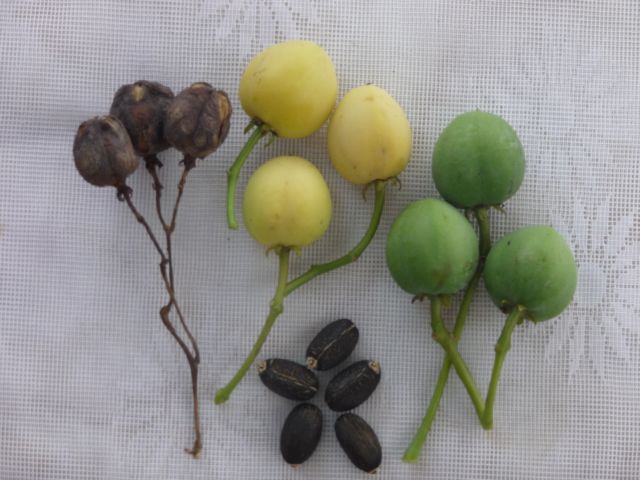Jatropha

A source of fuel, light, fertiliser and it keeps the mosquitoes away too!
The seeds of jatropha are particularly oil-rich. They may be processed locally to produce biofuels for lamps, stoves and generators, or turned into soap. The residue from this process can be used to produce biogas for cooking and an agricultural fertiliser. Jatropha is not palatable to livestock, and its bushes grow to form strong and impenetrable fences.
Jatropha is locally known in Malawi as Msatsimanga. It is a multipurpose perennial tree belonging to the Euphorbiaceae family. The tree is drought resistant requiring modest soil types, although, it will not grow on waterlogged soils. Flowering is dependent on climatic conditions, and is usually associated with the wet season, demanding more than 600mm of rainfall and warm temperatures. The fruit contains oil bearing black seeds that are toxic to humans and animals, but the oil is increasingly being recognised as a feedstock for biodiesel production or as a replacement fuel for kerosene for cooking and lighting . The tree can be grown from seed or from cuttings and has multiple uses ranging from soil erosion prevention when planted as live fencing to the processing and utilization of the oil-bearing seed.
Seed yields range from 0.1–15 tonnes/hectare/year and 1kg of nuts can produce 0.2 litres of oil. You can make your own lamp using Jatropha oil by taking an old water glass, a shoe polish lid and a shoe lace or wick. This is done by threading the lace through a tight hole in the lid and floating on top of the oil. Just 100ml of oil can provide lighting for over a week. Jatropha can also be a key ingredient for your own home made soap by mixing with water and caustic soda.
The presscake provides an excellent organic fertiliser with a nitrogen content equivalent to chicken manure.
Chichewa name: Msatsimanga
Scientific name: Jatropha Curcas




